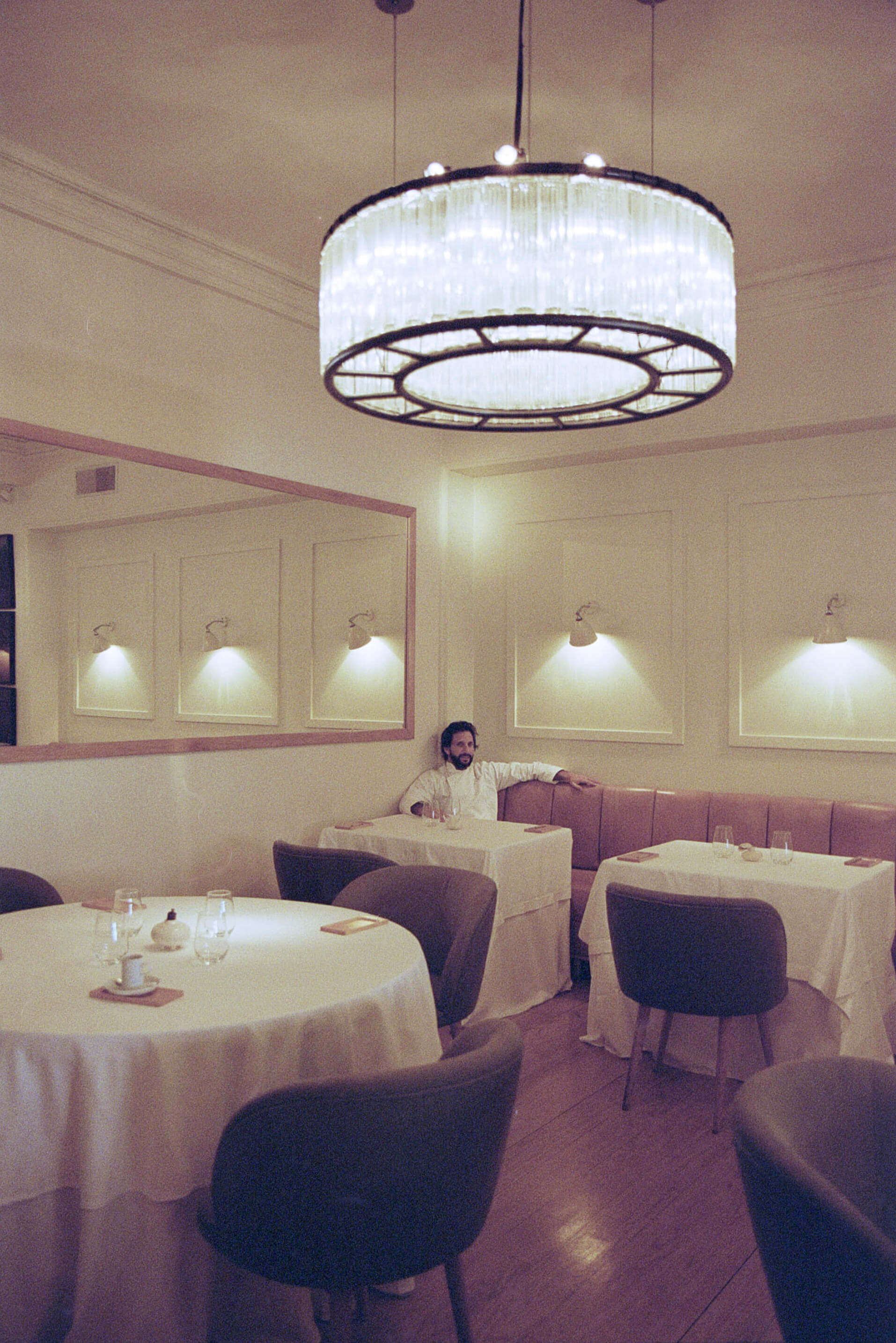Chiado, Lisbon, Portugal. We arrive in the São Carlos square at ten in the morning, our mouths dirty with the crumbs of custard pastries, the same yellow as the beautiful façade of the National Theatre. Chef Avillez (2 Michelin stars) is in the kitchen with his crew, making all the preparations for lunch at 12.30. We observe a ritual silence, the gestures calm and balanced, without becoming formal or haughty. It must be his cheerful presence that makes the situation normal.
He comes up to the tall pan of broth, slowly raises his hands up, and as if he were drawing smooth whirls, invites the steam to come towards him. He leans forward slightly, waits, breathes in, closes his eyes, he’s remembering the sea. In a series of black-and-white photos on the wall, a woman elegantly and happily sits on the sand whipped by the wind.
In this instant, we decide to go on a new trip. There’s a railway line that goes to Cascais, following thirty kilometres of coastline to the west of Lisbon. The first train leaves from the Cais do Sodré station at 5.30, bicycles travel for free. On the way to Cascais we sit on the lefthand side so we can always see the water, the River Tago which becomes the Atlantic. At the end of the nineteenth century, the bay, a fishing village, was chosen for its mild climate as the holiday destination for the Portuguese royal family, and other European nobles hastened to the villas of Cascais. José and his mother simply loved the wind that buffers the beach of Praia do Guincho, a few kilometres from the house of his grandfather, who had always lived here.
“The journey is never over. Only travellers come to an end. But even then they can prolong their voyage in their memories, in recollections, in stories. When the traveller sat in the sand and declared: ‘There’s nothing more to see,’ he knew it wasn’t true. The end of one journey is simply the start of another. You have to see what you missed the first time, see again what you already saw, see in springtime what you saw in summer, in daylight what you saw at night, see the sun shining where you saw the rain falling, see the crops growing, the fruit ripen, the stone which has moved, the shadow that was not there before. You have to go back to the footsteps already taken, to go over them again or add fresh ones alongside them. You have to start the journey anew. Always. The traveller sets out once more.”
The traveller is José Saramago and it was 1981 when he brought out Viagem a Portugal (Journey to Portugal). José Avillez, same first name, same character. José went round the world to return to his land as a traveller. It’s fresh news this year that he’s bought the Lucullus and he’s coming back to Cascais.
Like a harbour bordering on the Ocean, we’d like to know all the moods of his cuisine, see at night what we saw in the daylight, the small stone which has moved (the amuse-bouches include some perfect edible pebbles, modelled out of cocoa butter and filled with cod liver mousse, as well as a vase of flowers whose bouquet contains little tuna tartar temakis from the Azores Islands). Returning to familiar dishes, repeating them, origins and evolutions, memories and inventions, inventing other things to awaken memories and start the journey again.




